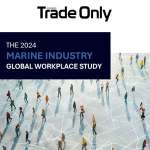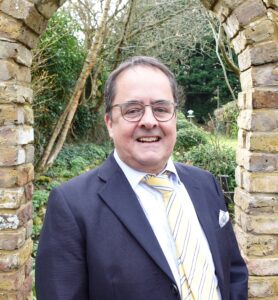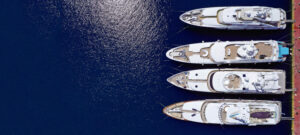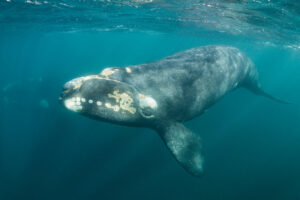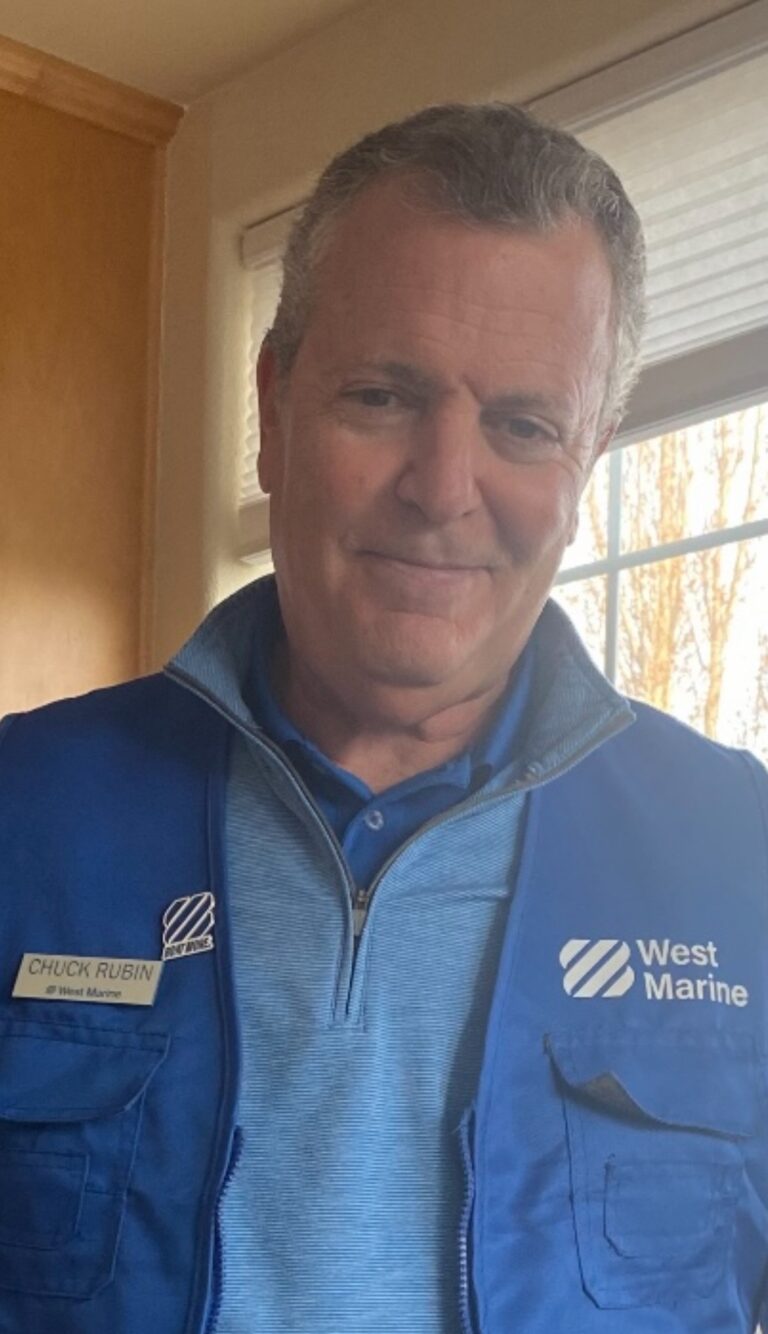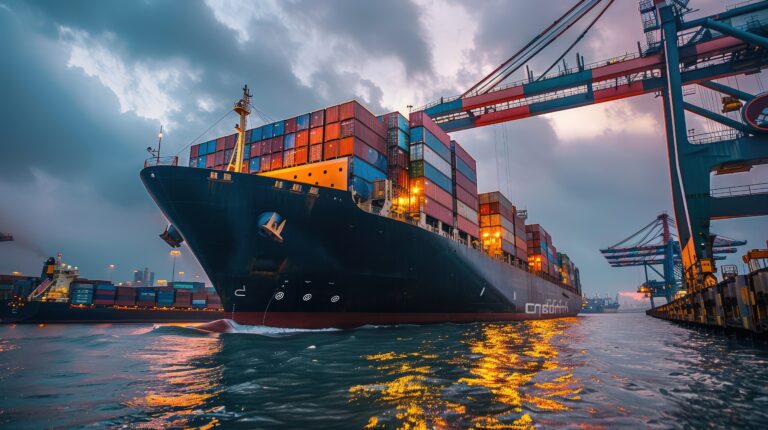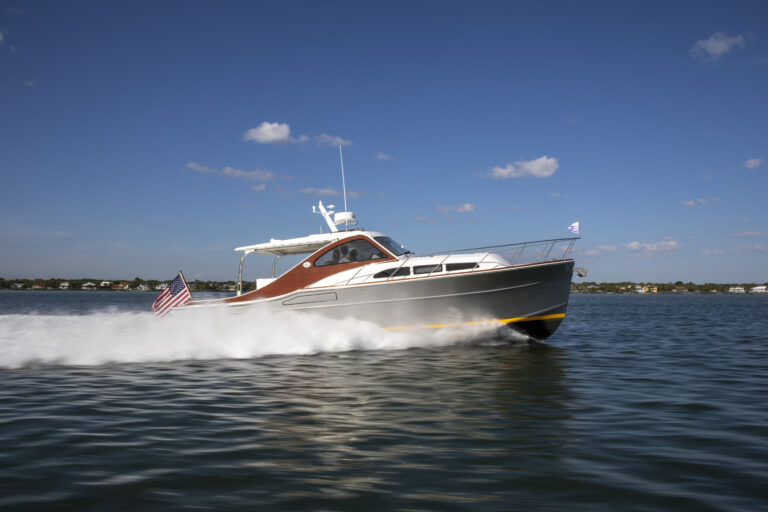
During the last five years, the wave of consolidation among marine suppliers has been largely driven by RV equipment manufacturers. Small marine manufacturers have bought competitors, along with the odd acquisition by companies outside the boating industry, but Dometic, Lippert and Patrick have led the major consolidation.
These acquisitions have not only expanded the reach of the corporate parents beyond RV, but also have reshaped their marine suppliers. “Five years ago, we were 100 percent pontoon,” says Jeff Wysong, vice president of sales for Lippert’s marine segment. “Now you’ll find our products on superyachts and many other styles of yachts.”
Based in Elkhart, Ind., Lippert started out by acquiring marine furniture makers, including Wysong’s former company, Lexington Corp. More recently, it has expanded into high-end marine awnings with the purchase of SureShade and anchoring and stabilization equipment with the acquisition of Lewmar.
Lippert’s initial purchase of the pontoon furniture makers made sense, as Elkhart is surrounded by pontoon builders. That division also makes furniture for the RV market. The addition of Lewmar and SureShade demonstrates that the company plans to move beyond commodities into possibly offering systems going forward.
Patrick Industries, another RV supplier from Elkhart, has been the most active buyer of marine suppliers. CEO Andy Nemeth recognized the potential for diversifying into marine. Patrick has committed in a big way, acquiring 22 brands that range from Marine Concepts, which designs and builds molds and tooling in Sarasota, Fla., to a full suite of products including fiberglass parts, towers, metal fabricated components, wire harnesses, canvas and electronics. The group includes firms that comprise different parts of a boatbuilder’s supply chain.
“We like the similarities between the marine industry and our other markets based on providing innovative products and service in trusted partnership with customers we serve,” Nemeth says about why Patrick entered the marine sector. “We also saw opportunities to partner with some phenomenal companies, brands and teams.”
Patrick recently opened a showroom in Sarasota, in Wellcraft’s former headquarters, where it displays products from its 22 marine brands. The 14,000-square-foot facility houses the showroom and design offices for Marine Concepts. The white building, shared by owner Medallion Homes, is classy-looking, with room for growth.
“We couldn’t have found a better situation,” says Rick Reyenger, Patrick’s group vice president of marine. “It turned out to be the perfect building for our needs.”
Soundings Trade Only editors visited two days after Patrick’s board of directors saw it for the first time. The showroom is mostly open space, with white walls, wood floors, high ceilings and museum-quality lighting. Several glass walls enclose offices and a conference room. Patrick’s brand exhibits, which were shipped from the International BoatBuilders’ Exhibition and Conference, are displayed in the new showroom. Patrick has a similar 40,000-square-foot showroom for its RV equipment and manufactured housing companies in Elkhart.
The Sarasota facility is circling its equipment brands around Marine Concepts, with the goal of connecting visiting boatbuilders with its brands. “If a builder visits every supplier outside of IBEX, they’d have to visit nine states,” says Michael Benedek, director of new business development for the marine division. “If they’re coming to Marine Concepts or just want to see a full-solutions platform of suppliers, they can see all our brands in the showroom.”
Adds Reyenger: “It has always been my view that the design phase is the best time to think about how components fit into a boat. We can provide the expertise and resources for builders who want to integrate tooling with our components.”
Reyenger, former CEO of Marine Accessories Corp., recently brought two engineers from XTP to meet with a center-console builder to discuss T-tops. “They were able to answer what’s possible, cost-effective, and they were doing it before the builder actually committed to the design,” he says.

Patrick’s business model takes a brands-first approach, with the parent remaining in the background. Its acquisitions tend to keep existing management in place, along with current production facilities. There is minimal direction from headquarters in Elkhart. “We enjoy and are energized by the partnership with our brands and encourage their entrepreneurial spirit to continue to thrive and drive innovation and creativity,” Nemeth says.
“The way it works,” adds Glen Brown, Patrick’s other VP marine, “is that Patrick is here to support us with resources and capital, but we keep the brands individually intact.”
The game plan worked long before Patrick started its marine acquisition initiative. The company now has 125 manufacturing facilities across five countries, with about 8,000 employees. Annual 2019 sales were not available at press time, but sales for 2018 were $2.3 billion, up from $1.7 billion a year earlier.
Benedek’s focus is to create “synergies” between Patrick’s marine brands and liaise with the boatbuilders. “This new facility changes the way we interact with our clients,” he says. “It lets us show what our fully engineered solutions are all about.”
“This is a long-term play,” Reyenger says. “The company will provide the resources we need to expand the business. It’s not like being owned by a private-equity group with a short investment horizon. There is a big commitment behind this group. Patrick has no intention of divesting its brands.”
Lippert Components also began acquiring marine companies five years ago, its first being local marine furniture maker Signature Seating. It then acquired other furniture makers in the area to consolidate its position as a lead supplier for the pontoon and runabout markets.
The $2.5 billion company has more than 11,000 employees and about 90 facilities in five countries. Its primary markets are RV and residential housing, but it also supplies the bus, cargo, equestrian trailer and heavy-truck industries.
RV accounted for about 66 percent of 2019 sales. “At least half of our facilities are for recreational vehicle components,” says Jarod Lippert, vice president of marketing and public relations at Lippert Components.
The move into marine is part of Lippert’s growth and diversification strategy. “When we started our marine acquisitions with Signature, we understood there were many similarities between RV and marine,” Lippert says. “At the time we made the acquisition, we were the leading manufacturer of RV furniture. Nobody was even a close second. Adding marine furniture took it to a whole new level.”
The company reported $35 million in third quarter 2019 sales for its marine division. Following its initial furniture acquisitions, Lippert continued to acquire companies beyond furniture, including Taylor Made in 2018, SureShade and Lewmar. “This gives us a presence in fabric, canvas, glass, furniture, and now shade and awning,” Lippert says.
Lippert folded its furniture brands under the Taylor Made umbrella. SureShade and Lewmar retain their own identities. The company has a different culture than Patrick, with a more unified structure. “We try to integrate companies as much as we can,” Lippert says. “At the end of the day, we’re working toward the same goals and hearing the same messages. The bottom line, of course, is supporting our products.”
The Lewmar buyout, while adding new categories to Lippert’s list of marine products, was also part of the parent’s acquisition strategy in Europe. “Four out of our six acquisitions last year were in Europe, so we’re focusing on that market for growth,” Lippert says. “Lewmar has a great leadership team, so we could trust them to lead the marine business without having to change a whole lot.”
Its January 2020 acquisition of the Dutch Polyplastic Group, which makes windows for the RV, trailer and supermarket segments, is also part of a larger strategy of Lippert’s new European companies working together. “Polyplastic is a chemical company with acrylic solutions, which includes marine,” Lippert says. “On the other hand, Lewmar knows every boatbuilder in Europe and can introduce them to Polyplastic’s solutions. There’s also a huge interest in acrylic in North America, so we see them moving into the other markets we serve. The goal is to exploit the synergies between our companies.”
Exploring Opportunities Outside Marine
SureShade is also exploring opportunities outside marine. “They introduced expandable RV awnings last year that lend themselves to the Class B van segment,” Lippert says. “That market is only going to get bigger, so we see an excellent opportunity for growth there.”
The company has also invested heavily in telematics. Its OneControl system has been added to its RV product line and eventually will come to marine.
“Our goal is to integrate smart technology into all products, whether it’s an RV or a boat,” Lippert says. “We want to be able to put technology into a window, for instance, so you’ll can automatically tint glass. At the moment, telematics are an upsell, but the next generation of boaters will expect it as standard equipment.”
Sweden’s Dometic is the third RV supplier that has moved heavily into marine. The company says its RV product lines account for 52 percent of global sales, while marine is about 27 percent. RV sales are strongest in the Americas, with Europe a close second. Marine is also highest in the Americas, though marine sales are five times higher than Europe.
Dometic was the first major acquisitor in the marine market, having bought SeaLand in 2002 and TaylorMade’s Cruisair and MarineAir divisions a year later. In 2017, it acquired SeaStar Solutions, and Oceanair in the U.K.
The $1.9 billion company revised its business strategy in 2018, saying it planned to increase its presence in the RV and marine aftermarkets while reducing costs across the company. It announced consolidations of different facilities in its 2020 earnings statement. “A total of 10 sites and around 200 employees have been affected during the quarter,” says Dometic CEO Juan Vargues. “In January, we took further action in the U.S., affecting one manufacturing site and around 200 employees.”
Vargues says Dometic plans to increase spending on new-product development. In 2018, it spent 1.9 percent of net sales on product development. There is a crossover between marine and RV products, though a company spokesperson says products are not identical. “We develop specific products for the two markets but use basic technology as the foundation,” he says. Dometic will consider acquisitions going forward as it grows product categories.
Patrick, the quietest but arguably most aggressive buyer, also plans to buy more marine equipment companies. “We’re excited by the opportunities to continue to partner with the great companies in the industry,” Nemeth says.
The good news for the boating industry is that these RV companies provide stability to the brands they purchase, with long-term expansion plans. Consolidation across the industry, however, makes it challenging for smaller companies to compete with the much larger groups.
RV AND MARINE INDUSTRIES
RV Industry Stats
• $114 billion in annual economic impact
• Supports 596,355 jobs (direct and indirect)
• 2019 unit shipments: 390,500
• 404 manufacturers employ about 53,088 workers
• 85 percent percent of RV production via three manufacturing groups
• Suppliers employ 40,719 workers
• Dealers employ 40,891 workers
• Service and repair sector employs 6,740 workers
• 186 aftermarket facilities employ 3,187 workers
Marine Industry Stats
• $170.3 billion in annual economic impact
• Supports 691,149 jobs (direct and indirect)
• 2019 unit sales: 280,000
• 925 boatbuilders
• 11,220 marinas
• 3,650 dealers
• 11.9 billion registered boats
• $42 billion in annual U.S. sales (boats, products and services)
• Annual boat exports: $1.5 billion
This article originally appeared in the March 2020 issue.

